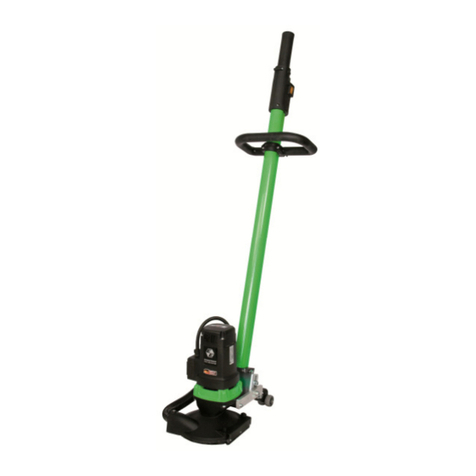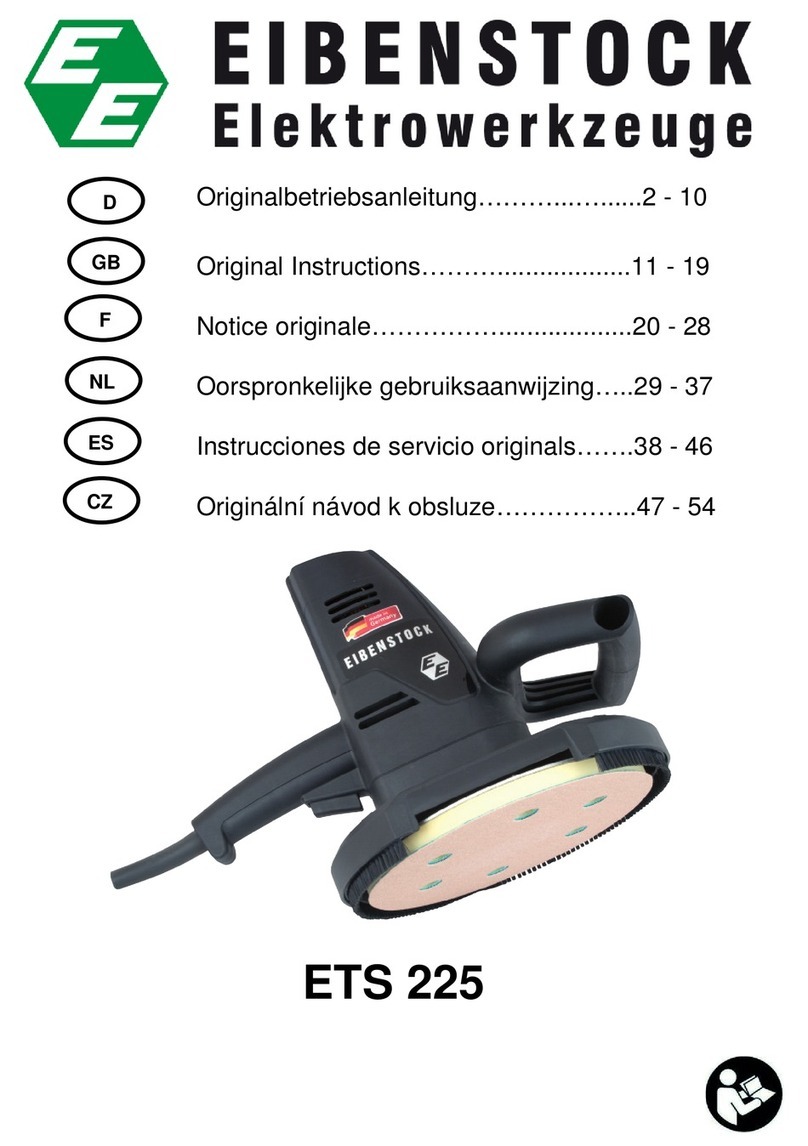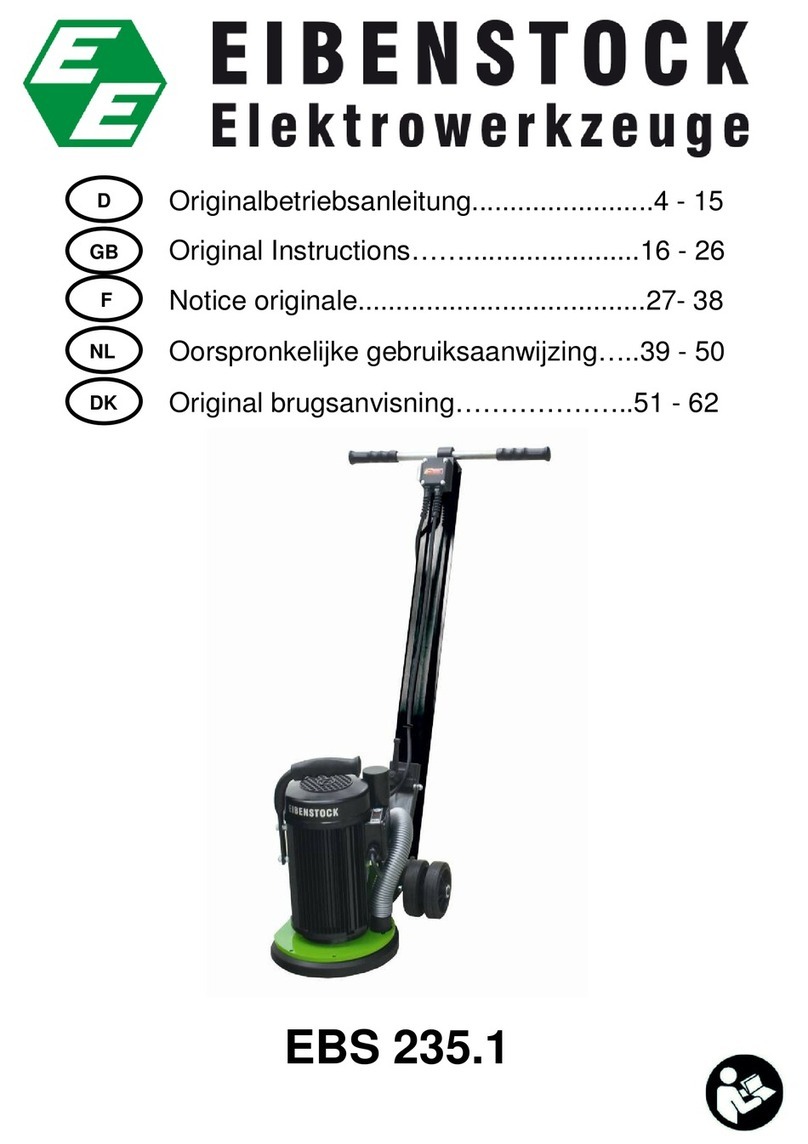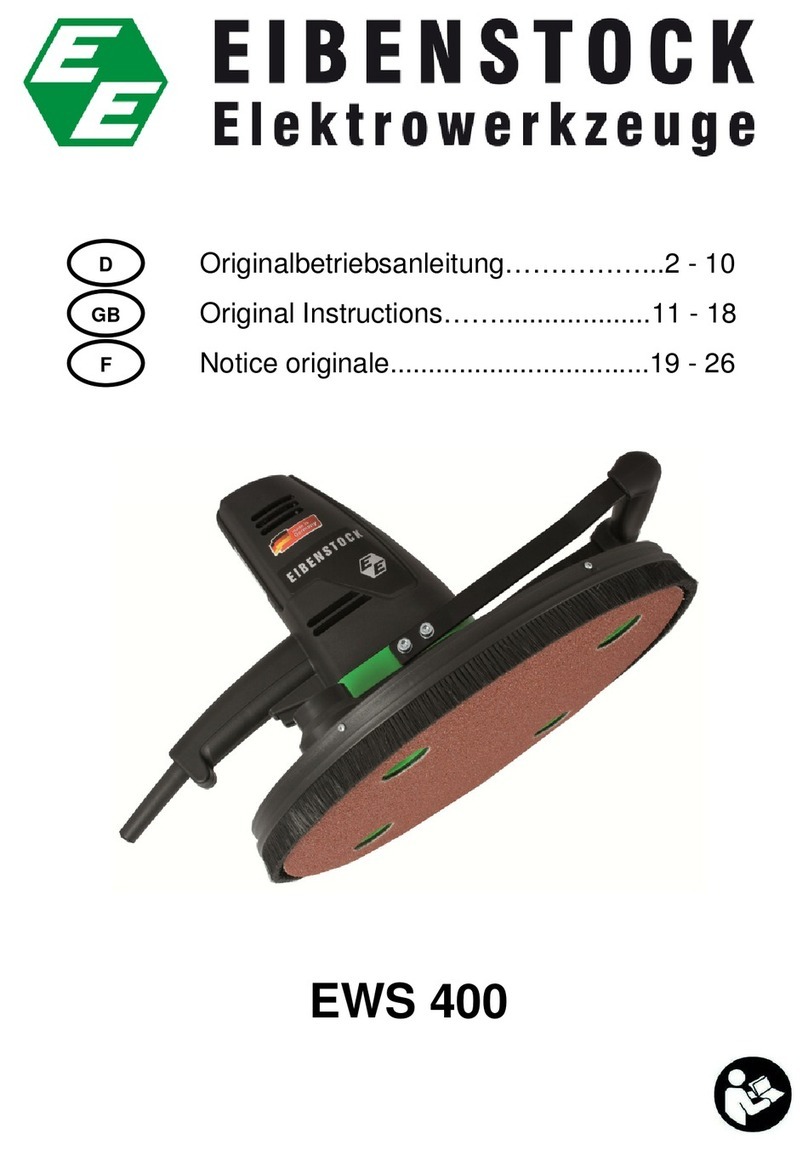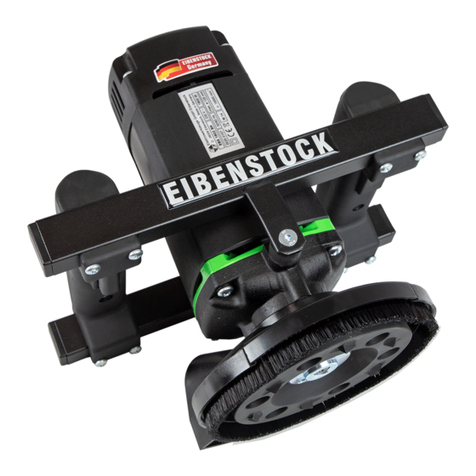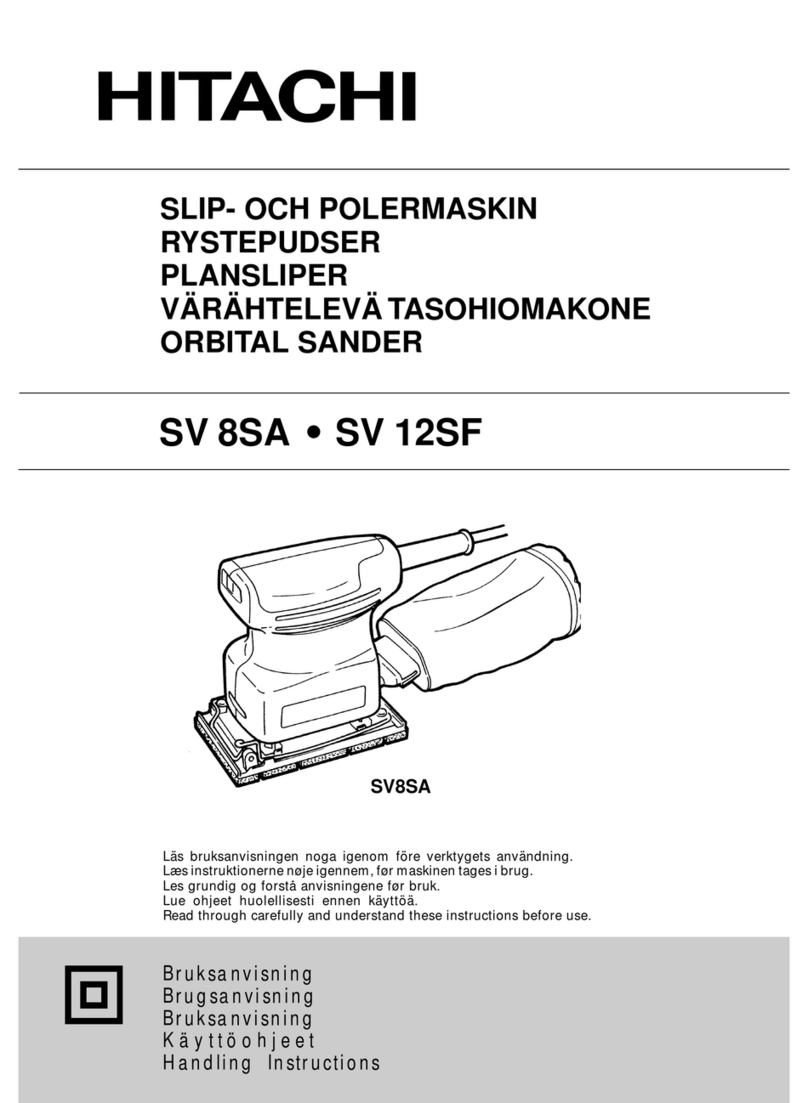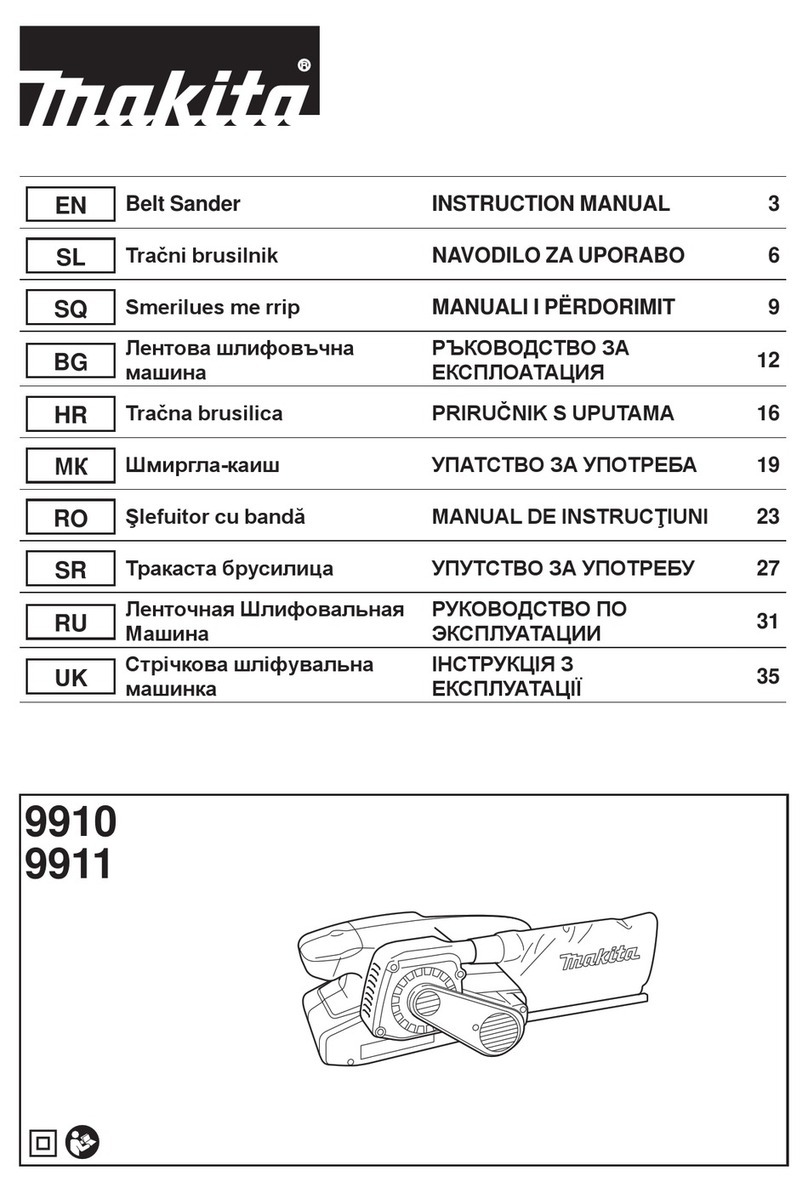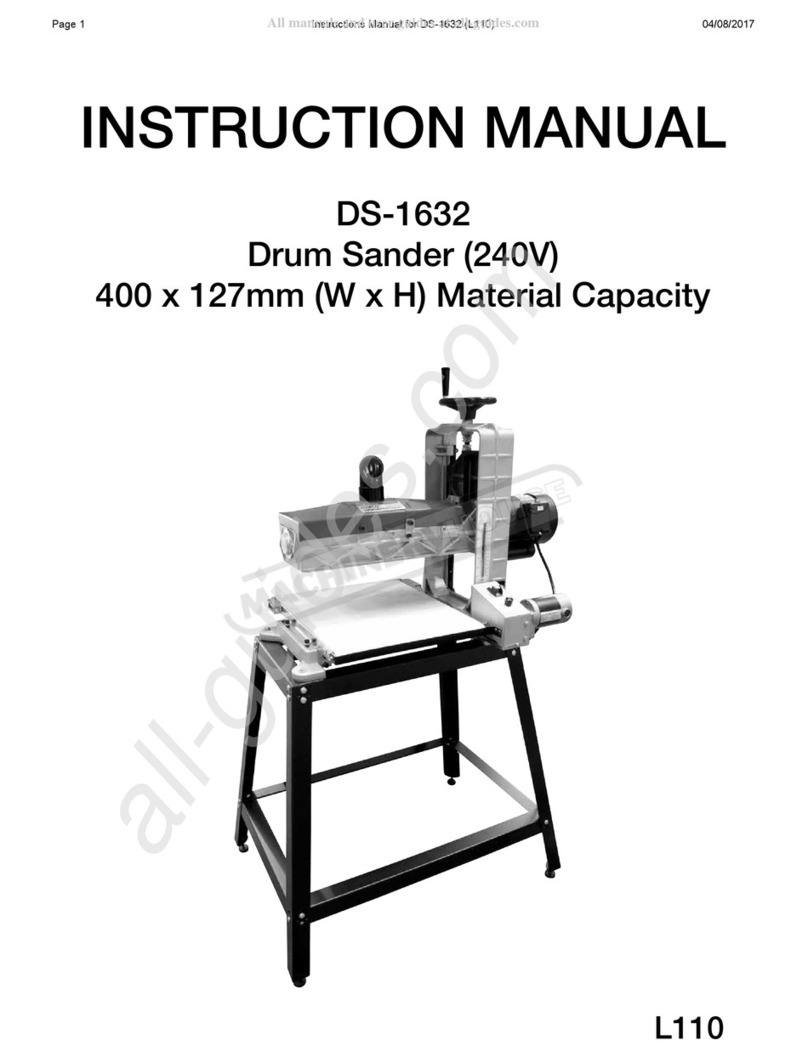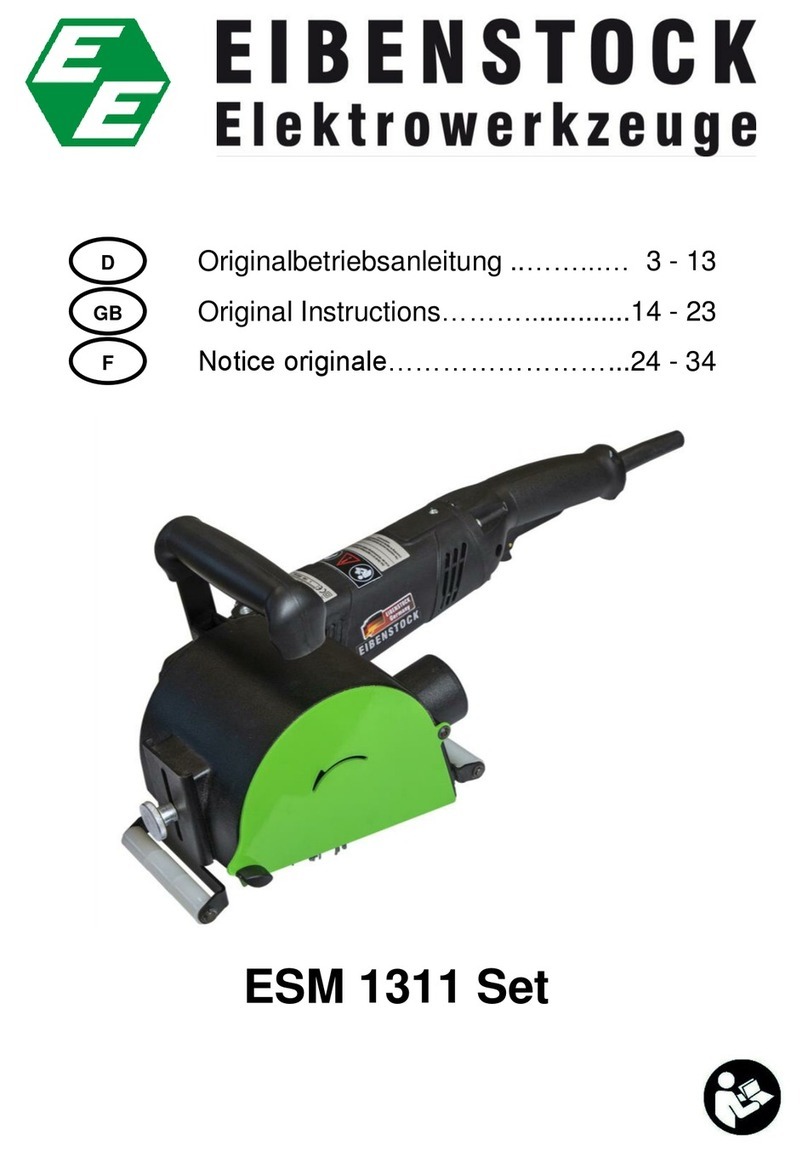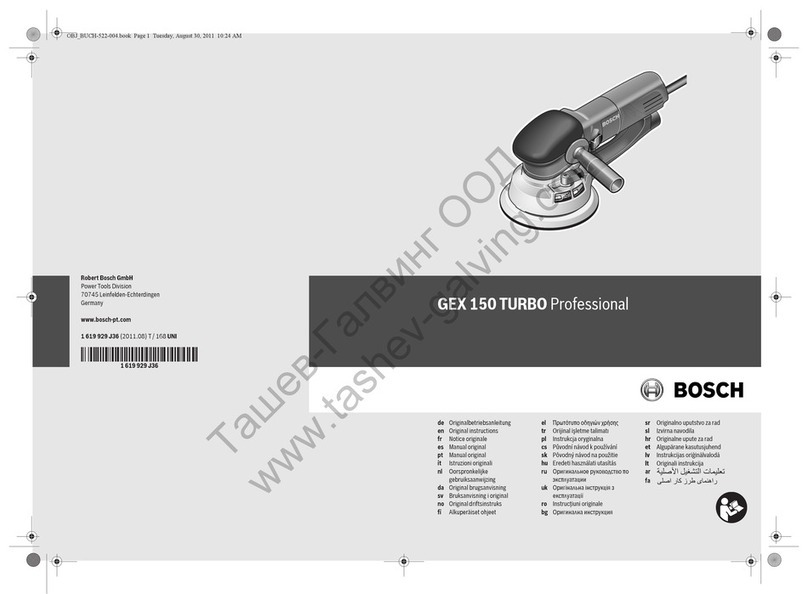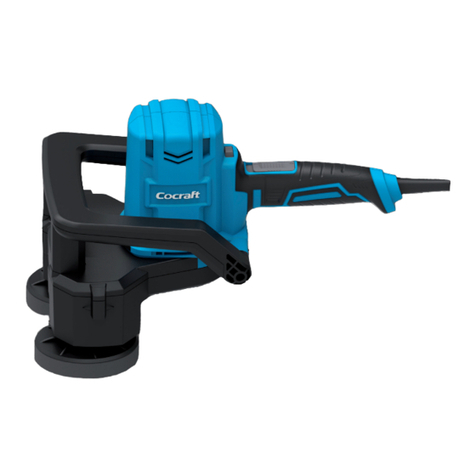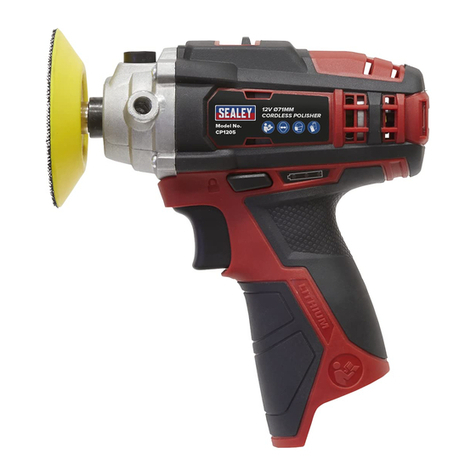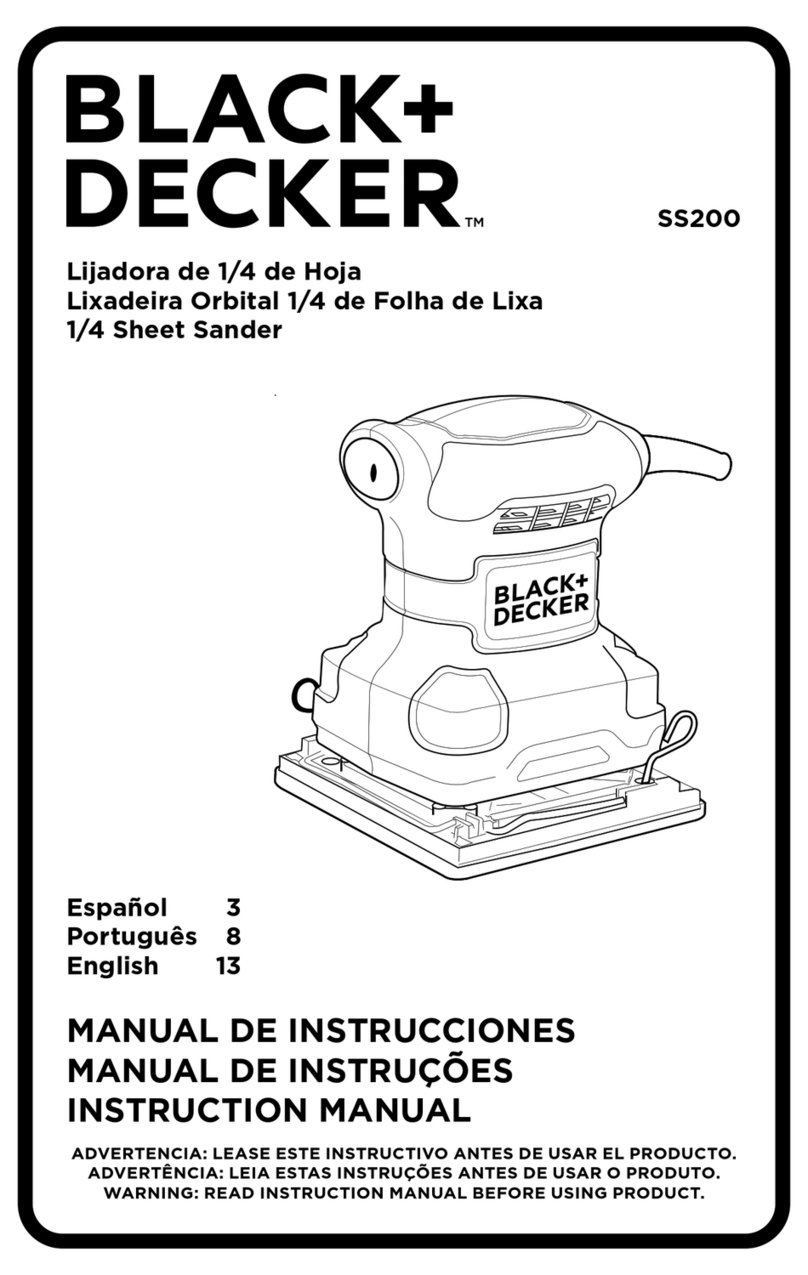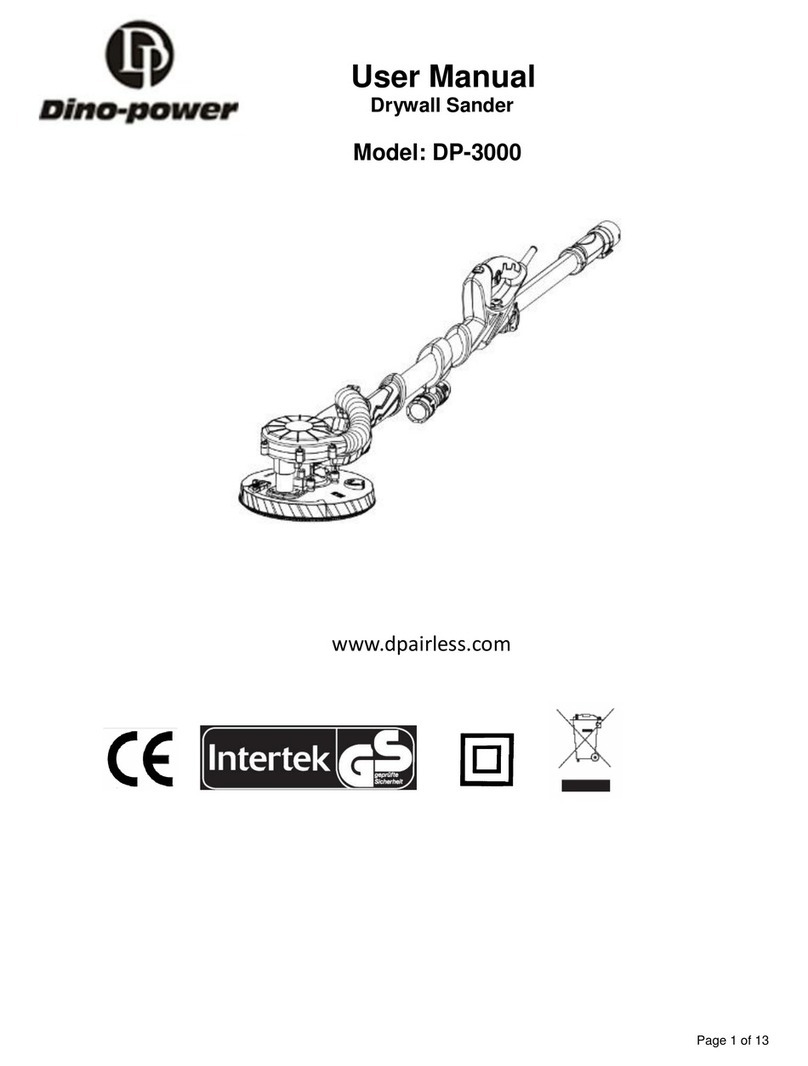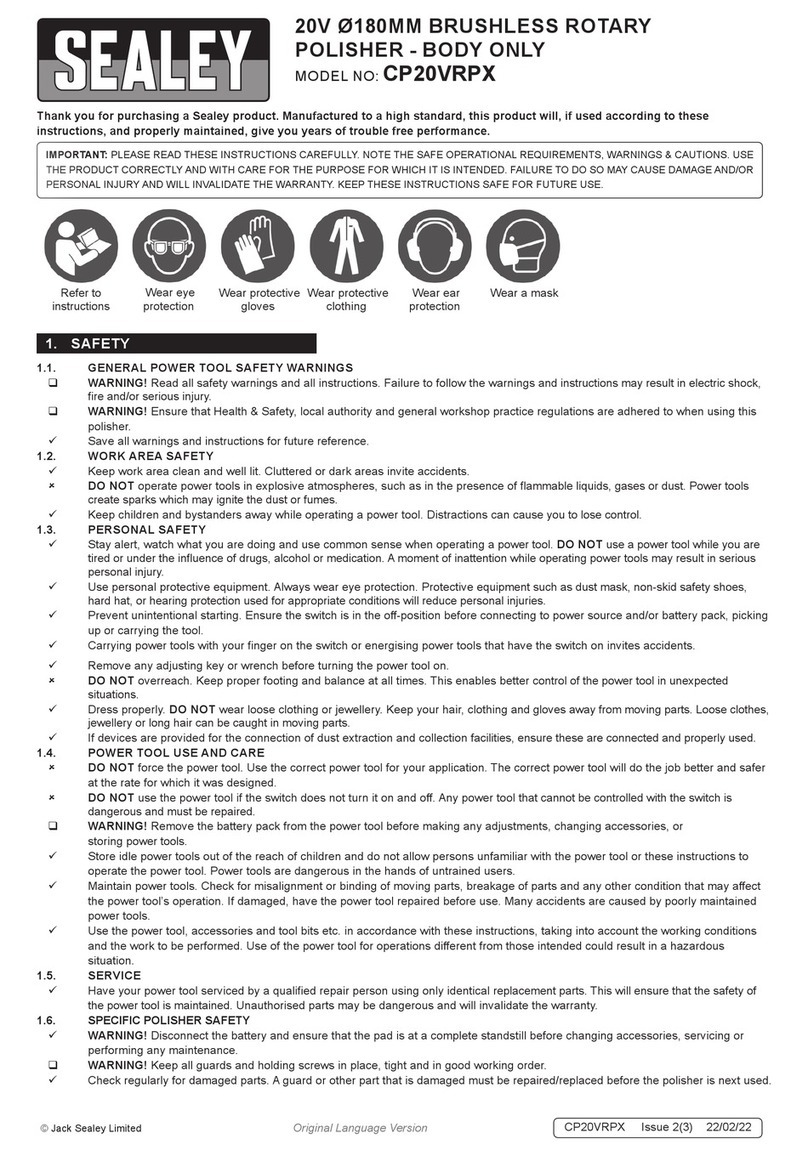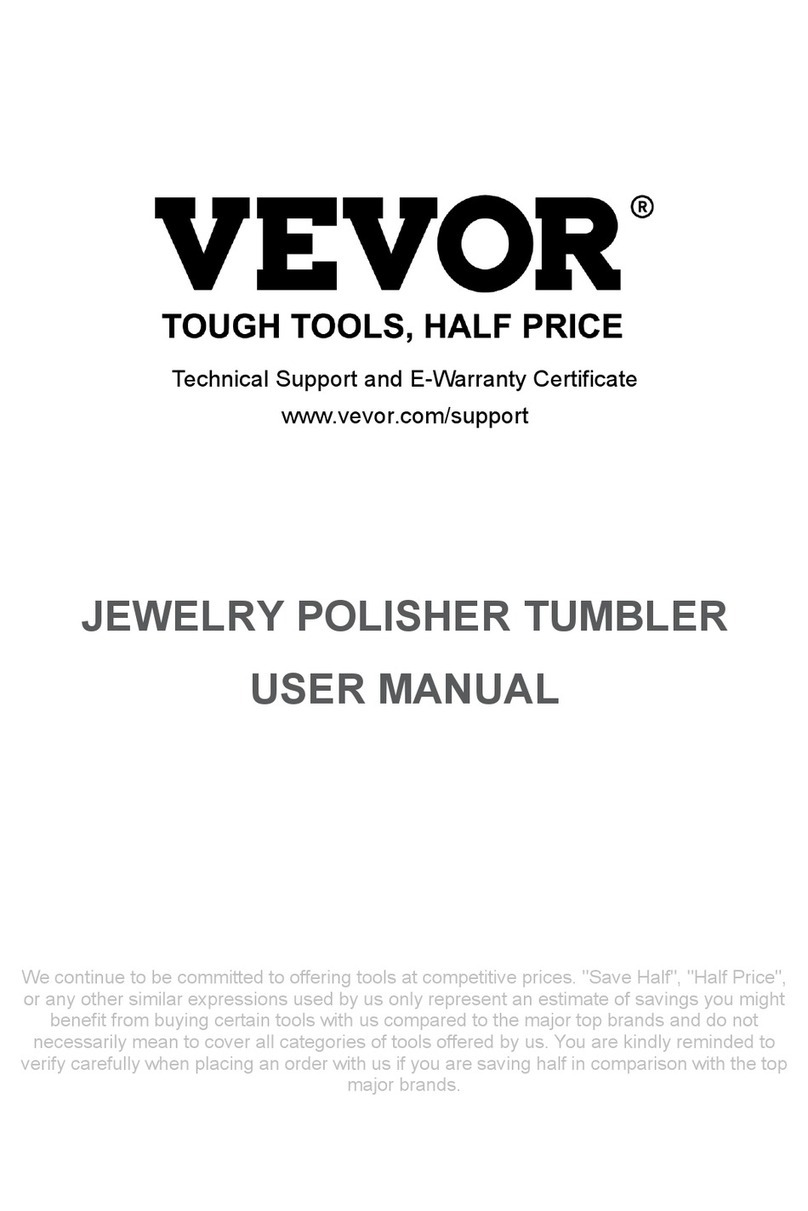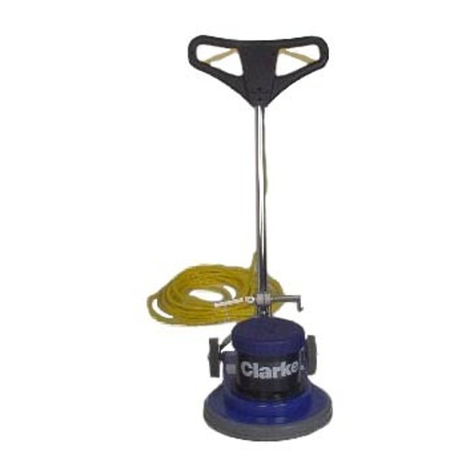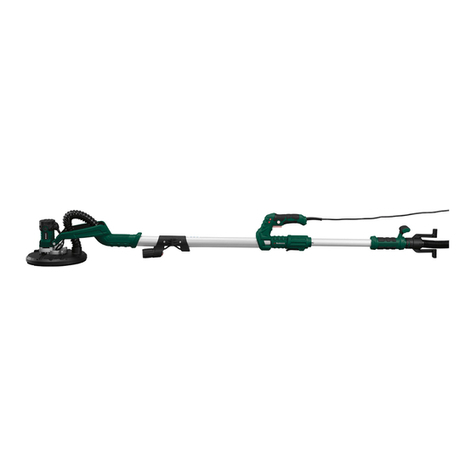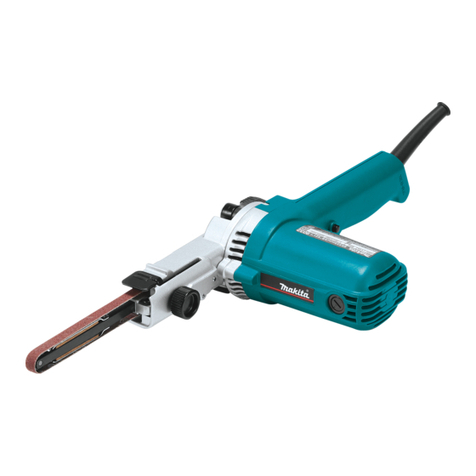
4
Sicherheitshinweise
Gefahrloses Arbeiten mit dem Gerät ist nur möglich,
wenn Sie die Bedienungsanleitung vollständig lesen und
die darin enthaltenen Anweisungen strikt befolgen.
Zusätzlich müssen die allgemeinen Sicherheitshinweise
im beigelegten Heft befolgt werden. Lassen Sie sich vor
dem ersten Gebrauch praktisch einweisen.
Wird bei der Arbeit die Anschlussleitung beschädigt oder
durchtrennt, diese nicht berühren, sondern sofort den
Netzstecker ziehen. Gerät niemals mit beschädigter
Anschlussleitung betreiben.
Arbeiten Sie nicht in der Nähe von explosiven Stoffen (Benzin,
Verdünnung).
Asbesthaltige Materialien dürfen nicht bearbeitet werden.
Manipulationen am Gerät sind nicht erlaubt.
Vor jeder Benutzung Gerät, Kabel und Stecker überprüfen. Lassen Sie
Schäden nur von einem Fachmann beseitigen. Stecker nur bei
ausgeschalteter Maschine in die Steckdose stecken.
Betreiben Sie das Gerät im Freien über einen Fehlerstrom-
Schutzschalter mit max. 30 mA.
Ziehen Sie den Netzstecker, und überprüfen Sie, dass der Schalter
ausgeschaltet ist, wenn die Maschine unbeaufsichtigt bleibt, z.B. bei
Auf- und Abbauarbeiten, bei Spannungsabfall, beim Einsetzen bzw. bei
der Montage eines Zubehörteiles.
Schalten Sie die Maschine ab, wenn Sie aus irgendeinem Grund
stehen bleibt. Sie vermeiden damit das plötzliche Anlaufen im
unbeaufsichtigten Zustand.
Benutzen Sie das Gerät nicht, wenn ein Teil des Gehäuses defekt ist,
bzw. bei Beschädigungen an Schalter, Zuleitung oder Stecker.
Überprüfen Sie, dass die auf der Scheibe angegebene Drehzahl gleich
oder größer als die Lastdrehzahl der Maschine ist.
Schleifteller müssen sorgsam nach Anweisung des Herstellers
aufbewahrt und gehandhabt werden.
Kontrollieren Sie das Zubehör vor seiner Verwendung; keine
abgebrochenen, gesprungenen oder anderweitig beschädigten
Erzeugnisse verwenden.
Sorgen Sie dafür, dass das Werkzeug vor Gebrauch richtig angebracht
und befestigt wird, und lassen Sie das Werkzeug im Leerlauf 30
Sekunden in einer sicheren Lage laufen. Sofort ausschalten, wenn
beträchtliche Schwingungen auftreten oder wenn andere Mängel
festgestellt werden.
Vergewissern Sie sich bei Schleifwerkzeugen mit Gewindeeinsatz,
dass das Gewinde lang genug ist, um das ganze Spindelgewinde
vollständig aufzunehmen.






















